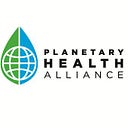Why Doctors Should Advocate for More Green Space
Kermshlise Picard, MPH

When the COVID pandemic rocked the world in 2019, “outside” suddenly became a sacred space, the only place where we could feel safe from the mysterious new virus. Millions of Americans rushed to national parks, with 15 parks setting all-time record visits when restrictions loosened in 2020. As with many things COVID-related, though, the benefits of nature are only accessible to a portion of our society. People living in urban environments often don’t have nearby green spaces where they can take in the outside air that’s so crucial in escaping COVID. This means that they also miss out on many other aspects of health and wellbeing that come from green space, from reducing chronic diseases to improving mental health. As I learn more about these health benefits — and the disparities — in medical school, I can’t help feeling that physicians have a duty to advocate for increased and improved urban green spaces. Not only are there many health and environmental reasons to do so, but doctors may also be the perfect bearers of these messages.
In some neighborhoods, you don’t have to look very far to find trees, fresh cut grass, or a few benches alongside clean water. Unfortunately, the areas where this isn’t the case tend to be places where people with lower incomes or people of color live. These places tend to have smaller parks that aren’t well-maintained, lack amenities, and are often deemed unsafe. When there are parks nearby, they tend to be overcrowded. In a time when outside is the safest place to avoid infection, this can make it hard to fight the COVID blues and get the physical activity needed to keep COVID at bay. It is not a coincidence that recent research found areas with more people of color had both more COVID cases and less green space.
There are so many documented health benefits to urban green space: Studies show that living in areas with more green spaces reduces risk of death from cardiovascular diseases, which includes common health risks like stroke and coronary heart disease. Researchers found that growing up around green space reduces risk of developing psychiatric disorders later in life. Green space has also been linked to improved birth outcomes (less preterm births and low birth weight); increased social cohesion (sense of connection among people); and more. Social cohesion, in turn, can decrease stress, improve mental health, and result in higher self-reported health.
Increasing green spaces in urban areas also has positive environmental impacts. Having gardens on city buildings or local parks with trees and shade can cool the neighborhood and reduce radiation, slowing the progression of extreme temperatures over time. Extreme heat, as you may know, can be particularly harmful to children and older adults. According to the CDC, about 702 Americans have died from heat each year since 2004. This doesn’t even account for conditions that caused death when combined with heat, like high blood pressure or respiratory illnesses. Those numbers are a lot higher. Extreme heat also has negative impacts on pregnant people, physical laborers, and the effectiveness of prescribed medications. Despite all these documented effects, too many people are unaware of the value of green space and how it ties into their health.
This is where a doctor can make a difference. The pandemic has shown us that Americans have become less trusting of science. At the same time, Americans trust their doctors to deliver climate change-related health information. As a matter of fact, many Americans are already talking to their doctor about how climate may impact their health. Given the current national attention on health disparities illuminated by COVID-19, as well as people’s increased longing for the outdoors sparked by the pandemic, doctors can use this opportunity to collaborate with their patients to find solutions that benefit both them and the environment.
To be sure, doctors have many obligations and limited time. They may feel unprepared to talk to their patients or policymakers about a topic as polarizing as climate change. But polls show that doctors already practice many climate-friendly habits (e.g. prioritizing plant-based diets, using public transportation, biking), and there is something to be said for leading by example. While educating their patients about other aspects of health, doctors can talk to their patients about the health impacts of green space and encourage them to spread the word. Doctors can talk to their colleagues about this too, so that they can raise awareness with their own patients. And importantly, lawmakers appreciate hearing from physicians and trust their expertise on how policies may impact real patients. There are increasing numbers of resources available to educate healthcare providers on how to effectively convey these types of messages. Perhaps in collaboration with willing patients, especially those who are most affected by the combined threats of inadequate green space and COVID-19, doctors can raise awareness about urban green spaces, advocate to increase them, and improve everyone’s health in the process. The patient-planet co-benefits of improved urban green space are a win-win for all of us.
